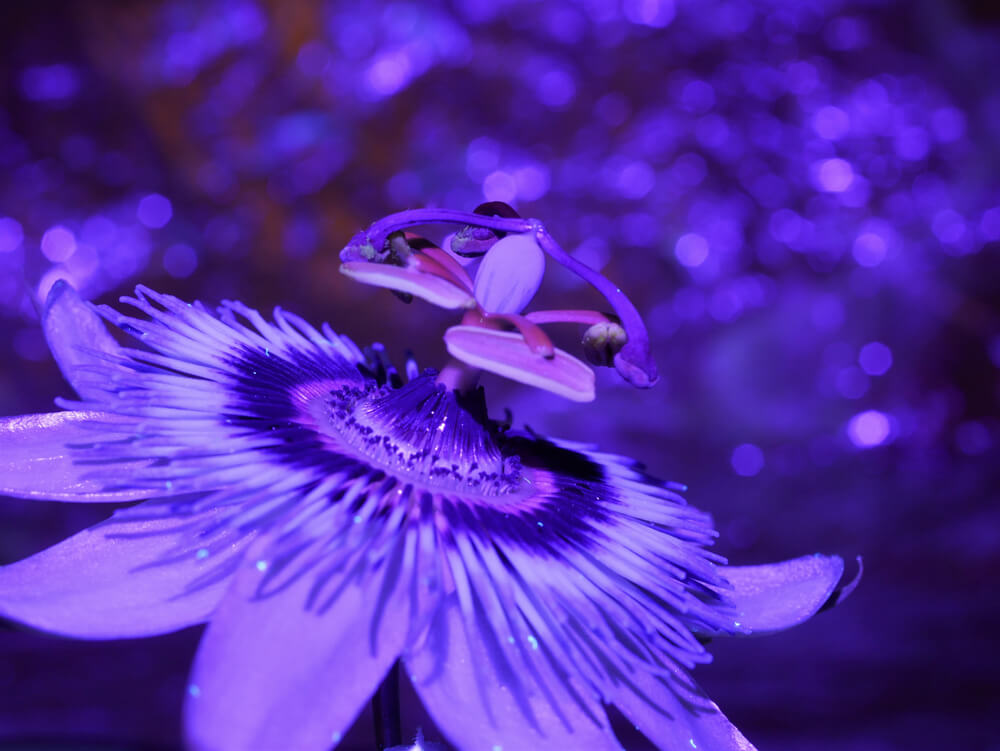Insights into the eyesight of bees
Have you ever wondered about the world seen through a bee's eyes? You may be surprised at how truly unbelievable it is. It's way more fascinating than you might think. These tiny garden superheroes have some seriously cool vision tricks up their sleeves. Let's buzz into the world of bees and discover how their eyes help them do their amazing work.
The Bee's Eye View
Imagine having goggles that let you see flowers in a whole new light. That's what it's like for bees. They have two types of eyes: the big, compound eyes and three smaller, simple eyes. The compound eyes are like a mosaic of thousands of mini-lenses, giving them a super broad view of the world. They can't see fine details like we do, but they're champs at detecting motion, perfect for spotting predators or zeroing in on flowers.

Ultraviolet? Ultra Cool!
Bees' compound eyes are like UV light detectives. They see ultraviolet patterns on flowers, which are invisible to us. These patterns are like neon "Open for Business" signs for bees, guiding them right to the nectar. It's a win-win, the flowers get pollinated and the bees get their food!
Three's a Charm: The Ocelli
Then there are the three small eyes on top of their heads, called ocelli. These aren't for checking out the scenery. Instead, they're like mini solar panels sensing the intensity of light. This helps bees figure out which way is up and navigate using the sun, which if you ask us, is pretty handy for finding your way back to the hive with a belly full of nectar.
Colours Galore (Well, Almost)
Bees may not see the whole rainbow like we do, but they've got their own colour spectrum. They can't see red, but they've got the blues, yellows and ultraviolets. This special colour vision helps them find and remember where the best flowers are.
Dance Moves and Directions
You know what's cool? Bees use their vision for dancing. Yep, you heard right, dancing. When a bee finds a great nectar source, it goes back to the hive and performs a 'waggle dance'. This dance tells other bees where to find the food, using the sun as a reference point. It's like giving directions with dance moves! A Dancing GPS!
Avoiding Collision: The Art of Bee Flight
Ever seen a bee zip through the air, making hairpin turns? Their eyes are a big part of that agility. Bees are masters at judging speed and distance, which helps them avoid crashing into things and makes them ace flyers.
Adapting to the Job
Not all bees have the same eyesight. Scout bees, who search for new flowers, have better vision than worker bees. It makes sense, right? Scouts need to spot flowers from far away, while workers focus on, well, work.
Bees and Environmental Changes
Sadly, our buzzy friends are facing tough times. Changes in the environment, like pesticides and habitat loss, can mess with their vision and make it harder for them to go about their business. Protecting bees means keeping their world safe and healthy. And ours too!
Seeing Like a Bee
Scientists are super interested in how bees see. They even create simulations to view the world from a bee's perspective. This research isn't just cool for understanding bees; it's also helping in robotics and computer vision. Nature's little engineers inspiring our big innovations!
Wrapping Up
A bee's eyes are a window into a world that's bustling with activity and brimming with life. Their vision is a key part of what makes them nature's top pollinators. Next time you see a bee buzzing around, remember, there's a lot more going on behind those tiny eyes than meets the... well, eye. Here's to our little friends with their big vision, making our world a blooming, buzzing place!
Author: John Dreyer Optometrist Bsc(Hons), MCOPTOM, DipCLP
Created: 1 Dec 2023, Last modified: 7 Jan 2025

